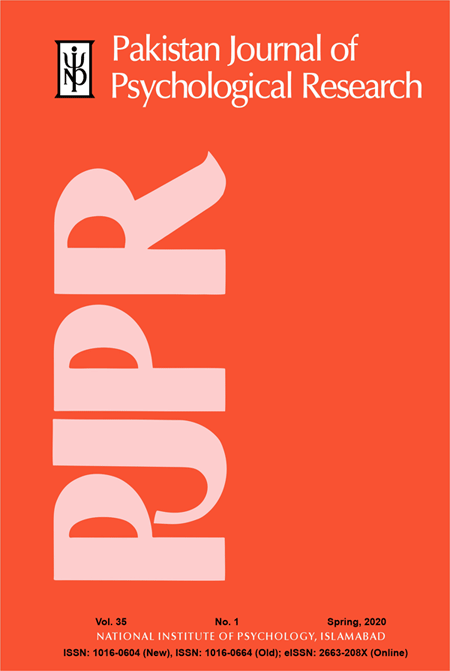Corrections and Retractions
Pakistan Journal of Psychological Research encourages authors, researchers, and readers to notify any scientific misconduct, expressions of concern, and spotted errors, especially concerning the mistakes that might affect the interpretation of data/results/information of a published article.
A: Corrigenda
Pakistan Journal of Psychological Research issues a corrigendum to correct the errors of fact to ensure the publication record. We follow the below procedure for issuing a corrigendum.
- Upon receiving the correction, the concerned person(s) willreview the suggested corrections and notify if it's worthy of being issued for corrigendum or not
- A corrigendum will only publish important errors that might affect the published data directly/indirectly
- Errors involving grammatical mistakes, text arrangements, or spellings will not be considered in issuing a corrigendum
- The published corrigendum will be linked to the original article that it corrects
- Pointed errors must be distinguishable from the retraction and expression of concern
- Corrigendum will be published free of cost
B: Retractions & Expression of Concern
Pakistan Journal of Psychological Research follows and recommends the Retraction Guidelines of the Committee on Publication Ethics (COPE) for the retraction of articles. We encourage the author(s) to assist in the investigation of such cases.
- Retraction will be considered if the pointed errors are significant enough to invalidate the published article's results and conclusion.
- Retraction will be considered if the errors affect the interpretation of results or if proven to be fraudulent or in other serious misconduct cases (e.g., data fabrication, image falsification, duplicate or redundant publication, inappropriate methodology, plagiarism, inability to get consent, copyright infringement, privacy violation, unethical research work, manipulated peer review process, any conflict of interest from authors, etc.)
- The retractions shall be published promptly and will officially replace the original publication on the website, and a "RETRACTED" watermark will be added to the original published paper.
- The retraction will be published in the current issue and linked to the original manuscript for its retracted record. The retractions should ideally be by the authors of the articles, but editors may accept retractions by another responsible person under certain conditions.
- The text of the 'Retraction' should explain why the specific article is retracted with the inclusion of a complete citation reference to the specific article.
- The Editors may inform the institution about the author(s) whose work is retracted and may choose to publish an announcement concerning the validity of the previously published work if deemed appropriate.
C: Expression of Concern
In case of well-founded concerns or suspicions, the editors may publish the Expression of concern to aware the readers ofpotentially misleading information. However, an expression of concern affects a researcher's reputation the same as a retraction. It is,therefore, often preferable to wait to publish a retraction when an independent investigation has made a definitive judgment.
D: Withdrawal of articles
Removal, deletion, or obscuring of an article or specific part of any article is limited to the following
- Legal infringements, defamation, or other legal limitations; or
- False or inaccurate data, especially those that, if acted upon, could pose a serious health risk.
In such cases, a retraction will surely be published to ensure the bibliographic information about the removed article is retained for the scientific record, along with a detailed explanation of removal or withdrawal.


